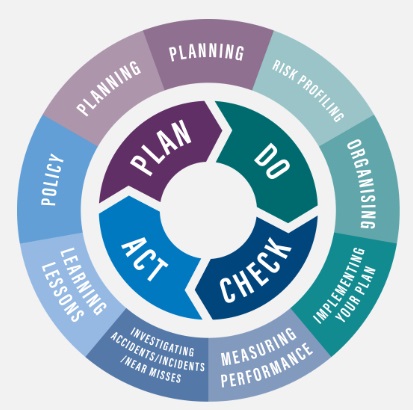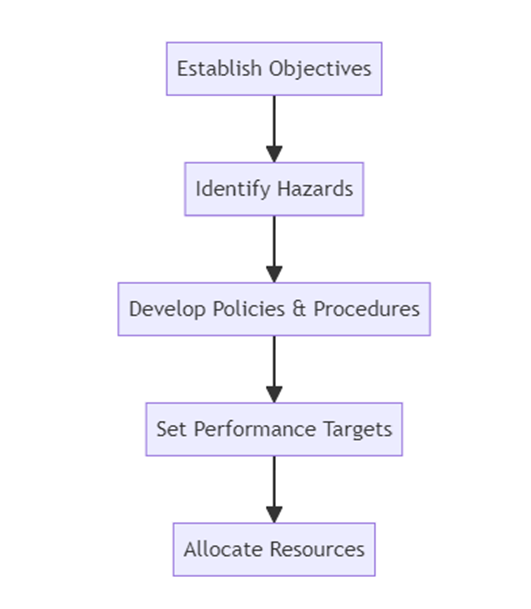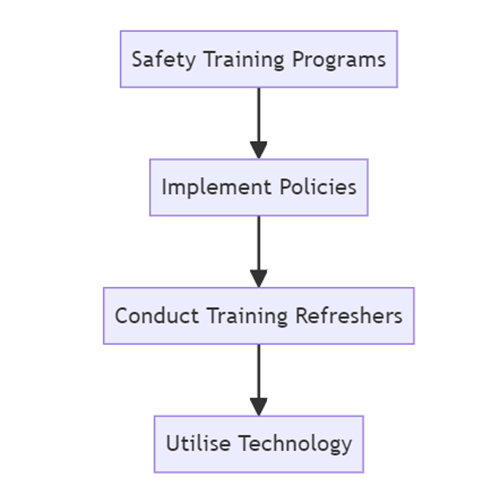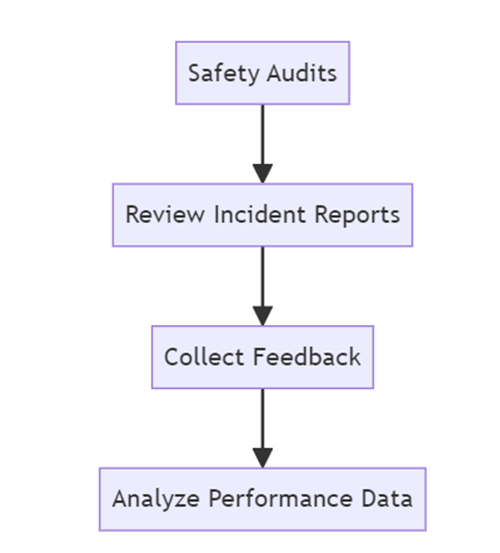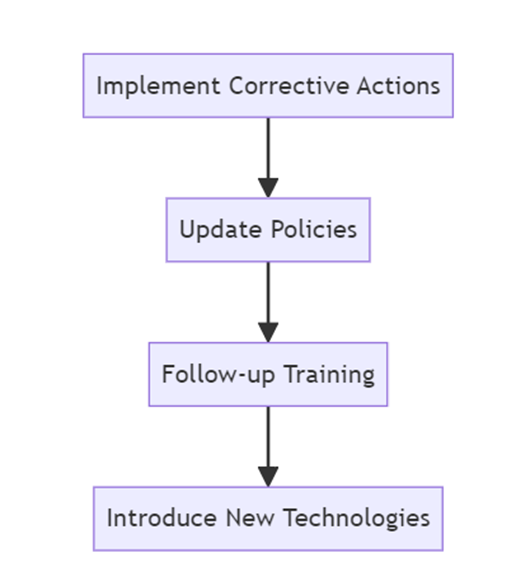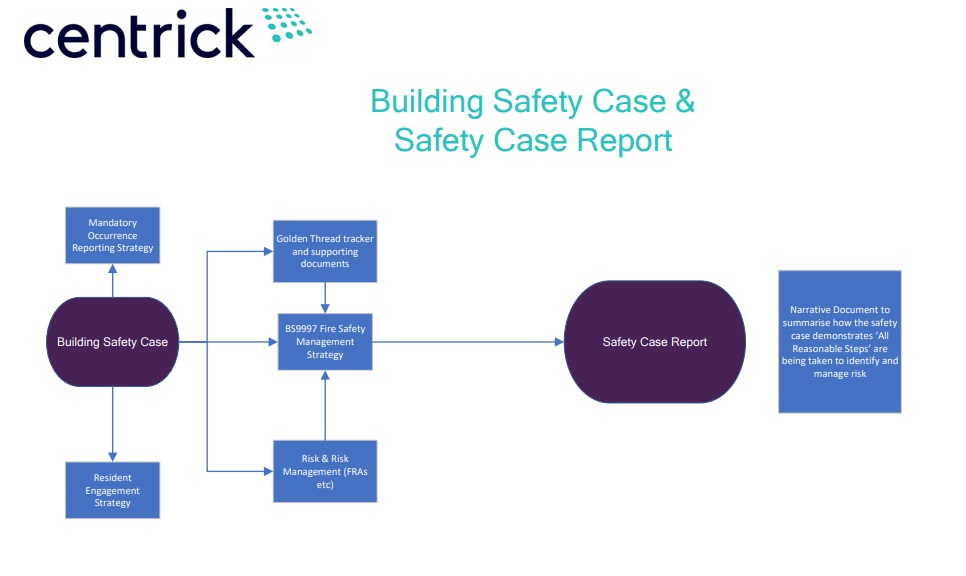Title Page
About This Report
-
Version
-
Date of report
-
Prepared By
-
Job Role
-
Report Preparation
-
The following is an overview of authors who contributed to the creation of this safety case report.
-
Name
-
Role
-
Professional Memberships & Qualifications
-
Contribution
-
Input Elements
-
The safety case report draws on evidence from expert professionals appointed by the PAP and RP in line with legislation and guidance. The findings of those reports have be used as supporting evidence to the claims made within this report.
The competencies to create this report are consistent with PAS8673 framework for managing higher-risk buildings.
This report is compiled within the competencies of the author(s) -
Report Scope & Logic
-
This safety case report is the narrative explanatory summary supported by additional elements as required for assessment by HSE Building Safety Regulator for application for the identified Higher Risk Residential Building (HRB) as defined in Building Safety Act 2022, the Building Act 1984 (as amended by the Building Safety Act 2022) and the Higher-Risk Buildings (Descriptions and Supplementary Provisions) Regulations 2023.
undefined
Executive Summary
-
The building is a "Higher Risk" building as defined under Section 65 of the Building Safety Act 2022 (the Act) in that it exceeds 7 storeys and/or 18m in height, is occupied, and contains two or more residential units.
As such, the requirements of Part 4 of the Act and its associated legislation apply to the building, and it was registered as a “higher-risk building” accordingly
Under Section 85 of the Act, the Principal Accountable Person for an occupied higher-risk building must prepare a report containing:
A detailed description of the building, the building safety equipment deployed within it, and how the building has been constructed.
An assessment of the building safety risks for the building.
A description of the management steps taken by those accountable for building safety for the building.
1. The Building
The Building
-
HRB Reference
-
Building Name(s)
-
Building Image
-
Building Description
-
Location
-
URPN
-
Number of Storeys
-
Building Height (m)
-
Sectional Diagram of storeys
2.Relevant Person(s)
Relevant Persons
-
Principal Accountable Person
-
PAP Address
-
PAP Email
-
PAP Contact
-
Responsible Person(s)
-
Responsible Person Organisation
-
Responsible Person Address
-
Responsible Person Email
-
Other Accountable Person(s)?
-
Accountable Person
-
Accountable Person Address
-
Accountable Person Email
-
Areas Accountable Person is responsible for
-
Other Accountable Person(s)?
3. Safety Management System
-
Organisational Safety Management System of Responsible Person
-
The Principal Accountable Person (PAP) has appointed Centrick as their managing agent under the terms of a management agreement. Centrick are also appointed to compile the building safety case and report. As the duty holder under RRFSO 2005 and the responsible person for the premises, it is the safety management system deployed by the agent (Centrick) on behalf of the PAP that is referenced below. The PAP organisation also hold equivalent information within their systems for the monitoring of agent performance and periodic reporting.
Plan-Do-Check-Act (PDCA) Cycle is outlined below
-
1. Plan
Objectives:
Establish clear health and safety goals aligned with Centrick’s operational and strategic objectives.
Conduct risk assessments to identify potential hazards and their impact.
Actions:
Develop safety policies and procedures tailored to specific property management needs.
Set measurable safety performance targets.
Allocate resources and responsibilities for health and safety management. -
2. Do
Objectives:
• Implement the planned safety measures and procedures.
• Ensure all employees and contractors are trained and competent.
Actions:
• Execute safety training programs through Centrick Academy.
• Implement the safety policies and conduct regular safety drills.
• Utilise innovative property technologies for real-time safety monitoring -
3. Check
Objectives:
• Monitor and measure safety performance against the set targets.
• Identify areas for improvement based on performance data and feedback.
Actions:
• Conduct regular safety audits and inspections.
• Review incident reports and near-misses.
• Collect feedback from employees and clients on safety practices. -
4. Act
Objectives:
• Implement corrective actions based on audit findings and feedback.
• Continuously improve the safety management system.
Actions:
• Update safety policies and procedures as needed.
• Conduct follow-up training sessions.
• Implement new safety technologies and practices. -
Systems & Processes
-
The Building (Higher-Risk Buildings Procedures) (England) Regulations 2023 https://www.legislation.gov.uk/uksi/2023/909/part/4/made
Dwellant - Centrick's primary building maintenance system provides for building document library and digital linking of contracts, service records and maintenance of all assets and structures within a building.
Fire Risk Assessments are provided via a framework agreement with Cardinus Risk Management Ltd utilising their Indigo digital platform. This platform has API to link seamlessly to building data in the Dwellant property management system, allowing Fire Risk Improvements to be updated, improved or resolved in real-time with evidence stored digitally. -
Golden Thread of Information
-
Safety Case Documentation
The Golden Thread of Information
Resident Engagement Strategy
Mandatory Occurrence Reporting system
Complaints Procedure
Fire Safety Management System -
Attachments
4. Risk Assessment & Control Measures
-
Fire Risk Assessments
- Type 1 FRA - PAS 79
- FRA 2
- FRA 3
- FRA4
- Façade Survey CAN 2020
- FRAEW - PAS9980 - Fire Safety Act 2021
- Compartmentation Survey
-
Type 1 FRA Risk Rating
-
Risk Improvement Plan
-
Risk Improvement Action
-
Current Risk Rating
-
Risk Improvement Plan
-
Risk Improvement Action(s)
-
Current Risk Rating
-
Type 2 FRA Risk Rating
-
Risk Improvement Plan
-
Risk Improvement Action(s)
-
Current Risk Rating
-
Risk Improvement Plan
-
Risk Improvement Action(s)
-
Current Risk Rating
-
FRA3 Risk Rating
-
Risk Improvement Plan
-
Risk Improvement Action
-
Current Risk Rating
-
Risk Improvement Plan
-
Risk Improvement Action
-
Current Risk Rating
-
FRA4 Risk Rating
-
Risk Improvement Plan
-
Risk Improvement Action
-
Current Risk Rating
-
Risk Improvement Plan
-
Risk Improvement Action
-
Current Risk Rating
External Wall Systems
-
EWS1 Rating
-
FRAEW Risk Rating
-
Interim Measures in place
-
Do the measures mitigate life-critical risk?
-
Remediation Required
-
Status of Remediation
Structural
-
Structural Surveys
- Reinstatement Cost Assessment
- RAAC (Reinforced autoclaved aerated concrete)
- Structural Survey
- Schedule of Condition
- (Cyclical) Planned Maintenance Survey
- Fire / Storm / Water Damage Inspection
- Measured Building Survey/ Height Verification
-
Are there any structural risks present
5. Resident Engagement Strategy
-
Is there a resident engagement strategy?
-
Timescale for completion
-
Residents over 16 provided with resident Engagement Strategy and Fire Safety Information per (FSER 2002)
-
Copy of resident engagement strategy for the building
6. Reporting Occurrences & Complaints
-
Is a suitable Mandatory and Voluntary occurrence Reporting system in place
-
Timeline for implementation and reason for delay
-
Describe the system of reporting and responsible persons
-
Have all mandatory occurrences been reported to BSR
Safety Case Report - All Reasonable Steps - Summary<br>
-
Summary
Based upon the risk assessments and evidence outlined within this report, it is the opinion of the principal accountable person that THE BUILDING IS SAFE FOR CONTINUED RESIDENTIAL OCCUPATION.
This is based upon the following:
The risks associated with the spread of fire, including both internal and external fire spread, are considered to be as low as reasonably practicable.
The risks associated with structural failure, including failure of a single element or the collapse of the entire building, are considered to be as low as reasonably practicable.
This assessment of risk is based upon the use below matrix
This safety case report is designed to show that as the Principal Accountable Person, in respect of the identified building all reasonable steps to manage building safety risks on an ongoing basis to prevent a building safety risk materializing, to reduce the severity of any incident resulting from such a risk materializing, and to deal with an emergency have been taken or are being taken
Head Claim
-
Head claim
-
Argument
-
Evidence
-
Risk Identified
-
Risk, Control Measure & Timescale
Sub Claim 1 - Structure
-
Claim
-
Argument
-
Evidence
-
Risk Identified
-
Risk, Control Measure & Timescale
Sub Claim 2 - Fire Occurence
-
Claim
-
Argument
-
Evidence
-
Risk Identified
-
Risk, Control Measure & Timescale
Sub Claim 3 - Fire Spread
-
Claim
-
Argument
-
Evidence
-
Risk Identified
-
Risk, Control Measure & Timescale
Sub Claim 4 - Safe Egress
-
Claim
-
Argument
-
Evidence
-
Risk Identified
-
Risk, Control Measure & Timescale
Sub Claim 5 - Risk Management & Mitgation
-
Claim
-
Argument
-
Evidence
-
Risk Identified
-
Risk, Control Measure & Timescale
Sub Claim 6 - Resident Engagement
-
Claim
-
Argument
-
Evidence
Sub Claim 7 - All Reasonable Steps
-
Claim
-
Argument
-
Evidence
Complaints
-
Complaints procedure for : structural failure and spread of fire in the building (building safety risks) The performance of an accountable person
Conclusion
-
All Building Safety Risks as defined in BSA 2022 have been identified in so far as is reasonably practicable
-
All Building Safety Risks are being effectively managed to limit likelihood and consequence
-
All duties of PAP under Part IV BSA 2022 have been adhered to
-
The Building is in the opinion of competent person(s) safe to occupy
-
Signed
-
Person completing this report
-
Date
-
Qualifications
Responsible Person Structure
-
Director of Building Safety
-
Associate Director - Building Safety & Compliance
-
Building Compliance Manager
-
Resident Engagement Manager
-
Building Remediation Manager
-
Building Safety Manager
-
Property Manager






